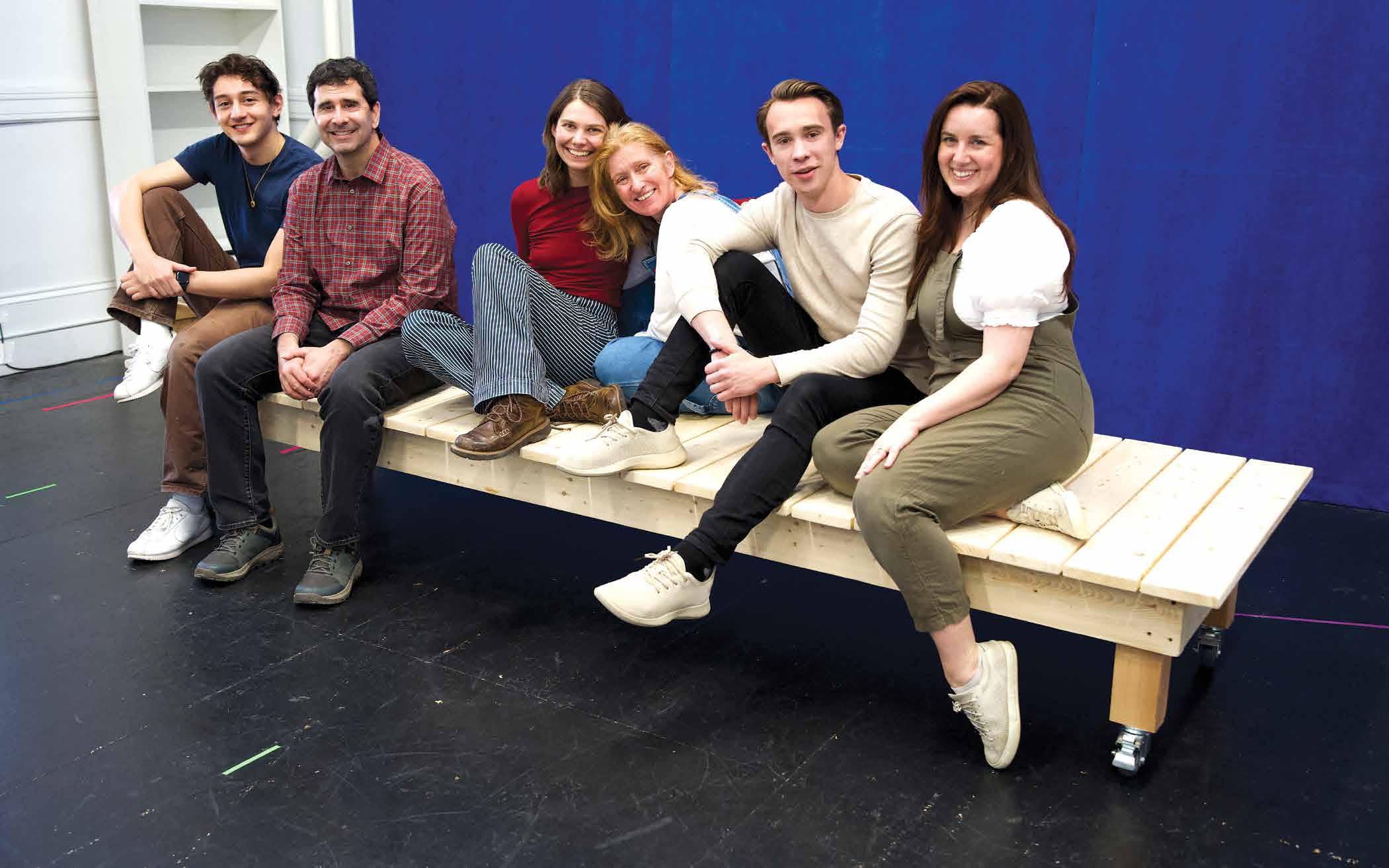
3 minute read
Blue Collar Work in the Media
by Kimmarie McCrann
A theme in John Cariani’s Not Quite Almost is the depiction of blue-collar workers in rural, northern Maine. Many of the play’s characters have jobs working at places like Walmart, as park rangers, or running cleaning companies. In intimate two-hander scenes, these characters often discuss what it means to hold these kinds of jobs, to remain in the town they grew up in, and the social biases surrounding their choices in life. So, what exactly is a blue-collar job? And how are they portrayed in the media?
The term “blue-collar” has been around since the 1920s in America to refer to a specific type of work. “Blue-collar” typically means jobs that require hands-on physical labor, including work in farming, manufacturing, cleaning, construction, and maintenance sectors of the economy. The phrase was first used to allude to these kinds of jobs in an Iowa newspaper in 1924, directly referencing the blue-colored denim and chambray shirts that trade workers of the time frequently wore. These shirts served a practical purpose for employees because dark colors would help to hide dirt, grease, and other materials that might soil their clothes during the workday. By the mid1920s, collared work shirts were being mass- produced by companies like Montgomery Ward, who featured a “Guaranteed Work Shirt” that came in two colors: blue and gray.
As a result of the increasingly common “bluecollar” phrase, the juxtaposing term “whitecollar” also rose to popularity in the early 20th century. “White-collar” is associated with jobs in office settings, such as lawyers, accountants, marketing and financial consultants, doctors, and upper-level business managers and executives. In 1945, Rear Admiral F. G. Crisp even used the phrase before the US Congress, testifying, “The Navy’s civilian employees fall into two broad groups, blue-collar workers and white-collar workers.” People who worked white-collar jobs were traditionally able to wear starchy white, pressed dress shirts because they did not interact with raw materials during their workday that might stain their clothes in the same way that blue-collar employees did. In the 1970s, social critic Louise Knapp coined the phrase “pink-collar” to describe jobs that were often held by women in America at the time. These included occupations like nursing, teaching, childcare, and other roles that received lower salaries because they were held by women.
The term “white-collar” has a far more favorable connotation than “blue-collar” in mainstream media today. Blue-collar workers are often portrayed as less intelligent and as gruffer, lazier members of society than their whitecollar counterparts. American media has certainly contributed to the harmful social bias that blue-collar work is worth less than whitecollar jobs. Time and time again in Hollywood, blue-collar workers have been portrayed as crude, low-IQ people who typically end up becoming the butt of the joke. A few examples of these characters include Bob from Bob’s Burgers, Tow Mater from Cars, and many of the blue-collar workers in the TV show Shameless. These characters are a gross misrepresentation of the kind, smart, and empathetic people that work blue-collar jobs in real life.
Pop culture depictions such as these can have real-world impacts. Terrence Lurry, a 21-yearold student at Emory University, told Newsweek that he was considering pursuing a career as an electrician, but that societal expectations convinced him to switch to medical school instead. Lurry said, “I think Hollywood is also pushing a narrative towards more postsecondary education. Not often in film and media do you see high school students portrayed as having dreams of entering the blue-collar workforce.” According to the 2024 Blue-Collar Annual Report released by management company Jobber, 76% of Gen Z individuals agree there is a stigma associated with going to vocational school over a traditional four-year university. The same report says that 61% of Gen Z says their parents told them not to consider vocational school or haven't spoken to them about it at all . Additionally, nearly half (48%) of Gen Zs agreed that women were discouraged from pursuing trade careers from a young age. These old-fashioned mindsets, combined with a discouragement from family members, can make blue-collar work seem less and less appealing to young people trying to choose a career path.
This negative portrayal of blue-collar work and a push towards four-year degrees has led to a growing labor shortage in America. The US Chamber of Commerce analysis and
Bureau of Labor Statistics reported in 2022 that 65% of durable goods manufacturing jobs were unfilled, and 40% of wholesale and retail trade jobs were as well. Additionally, ABC News reported in 2024 that “the construction industry will need to attract an estimated 501,000 additional workers on top of the normal pace of hiring in 2024 to meet the demand for labor, according to a proprietary model developed by Associated Builders and Contractors.” The ABC News report went on to estimate that the construction industry will need to bring in nearly 454,000 new workers to meet labor demands in 2025.
The disadvantageous portrayal of bluecollar workers in society and the media is a misrepresentation of the value of the kind and empathetic humans who work these jobs. Blue-collar workers are the most essential to the functioning of our daily lives. If all the plumbers and mechanics went on strike today, we would be in huge trouble. There’s a reason that blue-collar workers were deemed “essential” during the COVID-19 pandemic. John Cariani hopes to shed light on these social biases in Not Quite Almost, and shows how these workers are intelligent people, with dreams, in rural America. Working at Walmart isn’t a “bad” job. There’s no such thing as a bad job—only bad perceptions.











